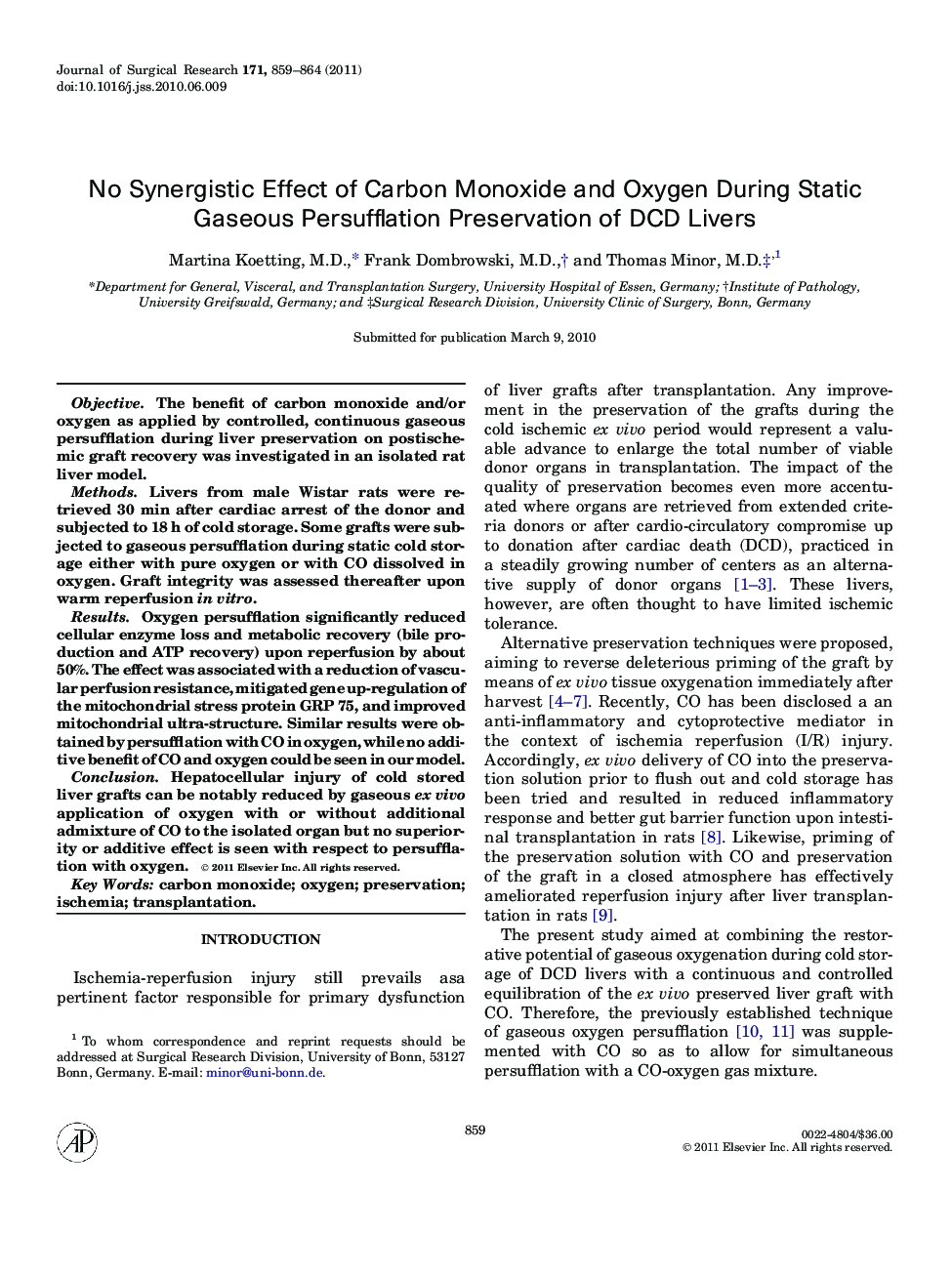| Article ID | Journal | Published Year | Pages | File Type |
|---|---|---|---|---|
| 4301894 | Journal of Surgical Research | 2011 | 6 Pages |
ObjectiveThe benefit of carbon monoxide and/or oxygen as applied by controlled, continuous gaseous persufflation during liver preservation on postischemic graft recovery was investigated in an isolated rat liver model.MethodsLivers from male Wistar rats were retrieved 30 min after cardiac arrest of the donor and subjected to 18 h of cold storage. Some grafts were subjected to gaseous persufflation during static cold storage either with pure oxygen or with CO dissolved in oxygen. Graft integrity was assessed thereafter upon warm reperfusion in vitro.ResultsOxygen persufflation significantly reduced cellular enzyme loss and metabolic recovery (bile production and ATP recovery) upon reperfusion by about 50%. The effect was associated with a reduction of vascular perfusion resistance, mitigated gene up-regulation of the mitochondrial stress protein GRP 75, and improved mitochondrial ultra-structure. Similar results were obtained by persufflation with CO in oxygen, while no additive benefit of CO and oxygen could be seen in our model.ConclusionHepatocellular injury of cold stored liver grafts can be notably reduced by gaseous ex vivo application of oxygen with or without additional admixture of CO to the isolated organ but no superiority or additive effect is seen with respect to persufflation with oxygen.
